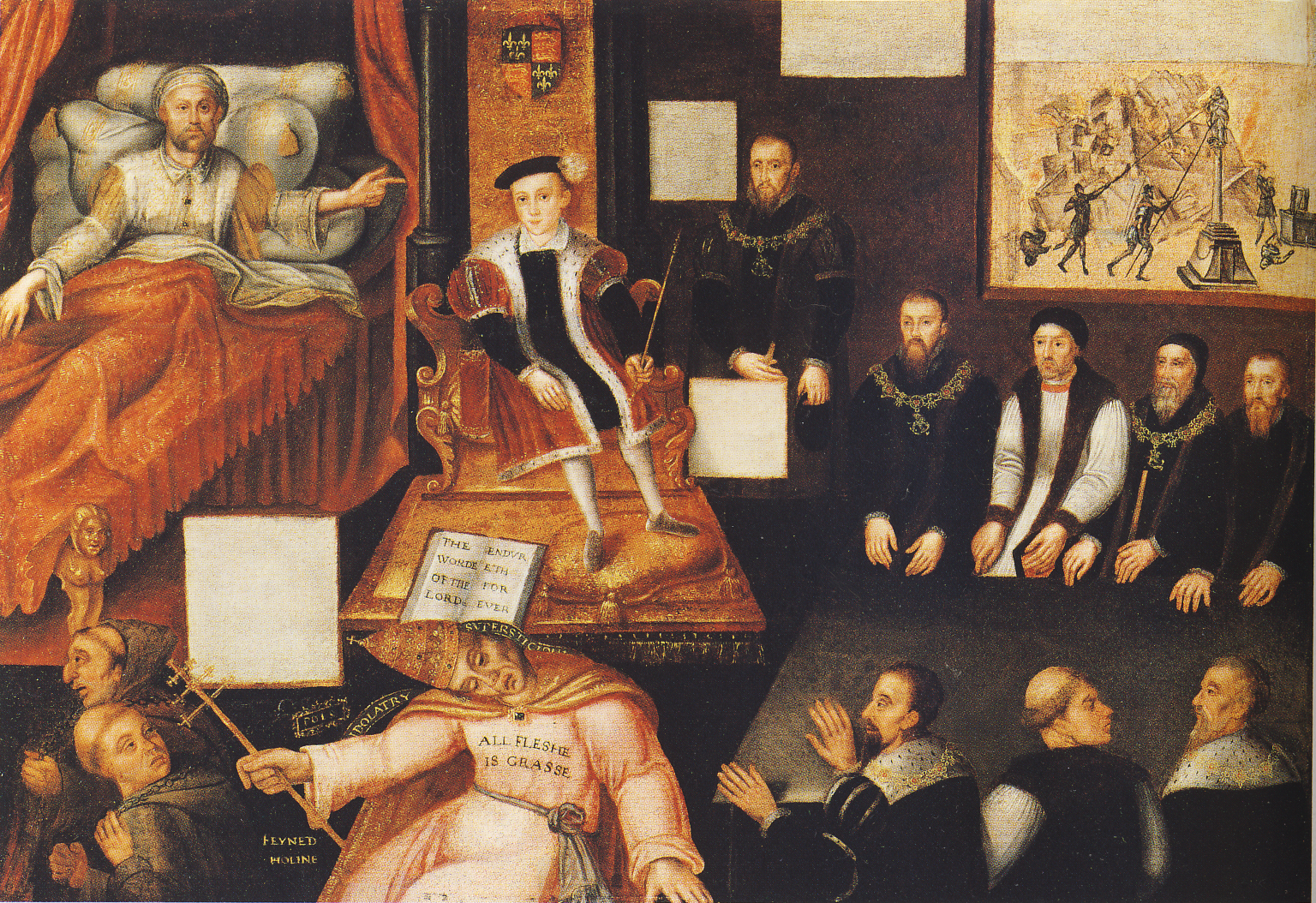| Make way for THE KING! |
Let's take a trip back to Tudor England, when on this day, February 20, a nine-year-old boy was crowned the king.
No pressure.
Yep, let's talk about Edward VI (also known in MY LADY JANE as "Poor Dear Edward," "Eddie," "Eddikins," "Sire," "Your Majesty," "Dennis" (read it--you'll see) "boy" and "Hey, you." In our book, Edward is quite the character--he's snarky and filled with teenage ennui and wants more than anything to kiss a girl (possibly with tongue) and have a real adventure before he dies.
We love Edward. We also did a ton of research to make sure that the details of Edward's life lined up pretty well with that of the real-life Edward.
So here's how our book-Edward and the real-life Edward ended up being alike:
They're the only legitimate sons of King Henry VIII, and they both became king on this fine day in 1547. They both knew Lady Jane Grey (obviously) and named her the heir to the throne. They were both once briefly betrothed to Mary Queen of Scots (shudder). They both got sick in the year 1552.
And . . that's about where the similarities end.
In real life, historians think it was most likely tuberculosis or a secondary infection from pneumonia that eventually killed Edward VI at the tender age of fifteen. Which was a total bummer.
In our book, he just may have been poisoned by a nefarious villain.
Also, in our version (spoiler alert!) Edward doesn't actually die. We've changed history (because that's what we, like, do, isn't it?) so that it's not only Jane who gets a less tragic ending. Edward deserved a better ending, too, in our opinion.
But the biggest difference between the Edward of real-life and the Edward of MY LADY JANE mostly has to do with their personalities. Because the real-Edward was brought up, from infancy, to be the greatest king who ever lived.
No, seriously. He was. From the moment he was born, the entire country knew that Edward would be king after Henry VIII died. Henry, for his part was overjoyed that he'd FINALLY had a son (sorry Mary and Elizabeth--too bad for you) and heir to the throne.
 |
| That's Henry VIII on the left, pointing to say, "Make this dude the king." |
Like we said before, no pressure. But mostly Edward was just brought up to be . . . good.
And, by all accounts, Edward VI was good. He was kind. Smart. Even-tempered. And he took the job of being king very seriously.
| This is not the face of a person who cracked a lot of jokes. |
Our Edward, because we were writing a comedy, arrived on the page as a bit of jokester. His smirk, we claim, is one of his most finely-honed royal skills. Our Edward isn't sure he even wants to be king. He yearns for a life outside of the confines of the palace. He wants to be free. He just wants to have some FUN, for crying out loud.
Our Edward is funny. (At least we hope you'll think so.)
So today we want to lift our glasses to toast both versions of Edward VI--the real and the fictional, because we love and admire them both so very much.
We've said it before, and we'll say it again:





